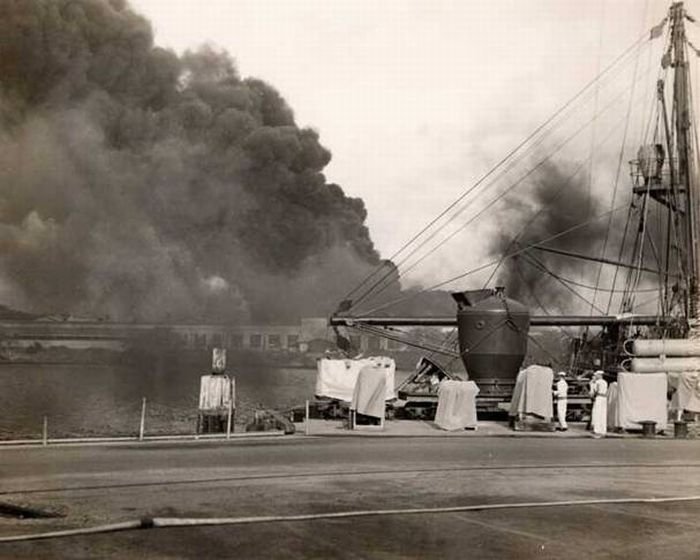|
|
History: Pearl Harbor Bombing
|
The U.S. ceased oil exports to Japan in July 1941, following Japanese expansion into French Indochina after the fall of France, in part because of new American restrictions on domestic oil consumption. This in turn caused the Japanese to proceed with plans to take the Dutch East Indies, an oil-rich territory.
Preliminary planning for an attack on Pearl Harbor to protect the move into the "Southern Resource Area" (the Japanese term for the Dutch East Indies and Southeast Asia generally) had begun very early in 1941 under the auspices of Admiral Isoroku Yamamoto, then commanding Japan's Combined Fleet. He won assent to formal planning and training for an attack from the Imperial Japanese Navy General Staff only after much contention with Naval Headquarters, including a threat to resign his command. Full-scale planning was underway by early spring 1941, primarily by Captain Minoru Genda. Japanese planning staff studied the 1940 British air attack on the Italian fleet at Taranto intensively. It was of great use to them when planning their attack on U.S. naval forces in Pearl Harbor.
Over the next several months, pilots trained, equipment was adapted, and intelligence collected. Despite these preparations, the attack plan was not approved by Emperor Hirohito until November 5, after the third of four Imperial Conferences called to consider the matter. Final authorization was not given by the emperor until December 1, after a majority of Japanese leaders advised him the "Hull Note" would "destroy the fruits of the China incident, endanger Manchukuo and undermine Japanese control of Korea." Though by late 1941 many observers believed that hostilities between the U.S. and Japan were imminent, and U.S. Pacific bases and facilities had been placed on alert on multiple occasions, U.S. officials doubted Pearl Harbor would be the first target. They expected the Philippines to be attacked first, due to the threat air bases there, as well as the naval base at Manila, would pose to sea lanes, hence supplies to and from territory to the south, which were Japan's main objective. They also believed (wrongly) that Japan was not capable of mounting more than one major naval operation at a time.
|
|









